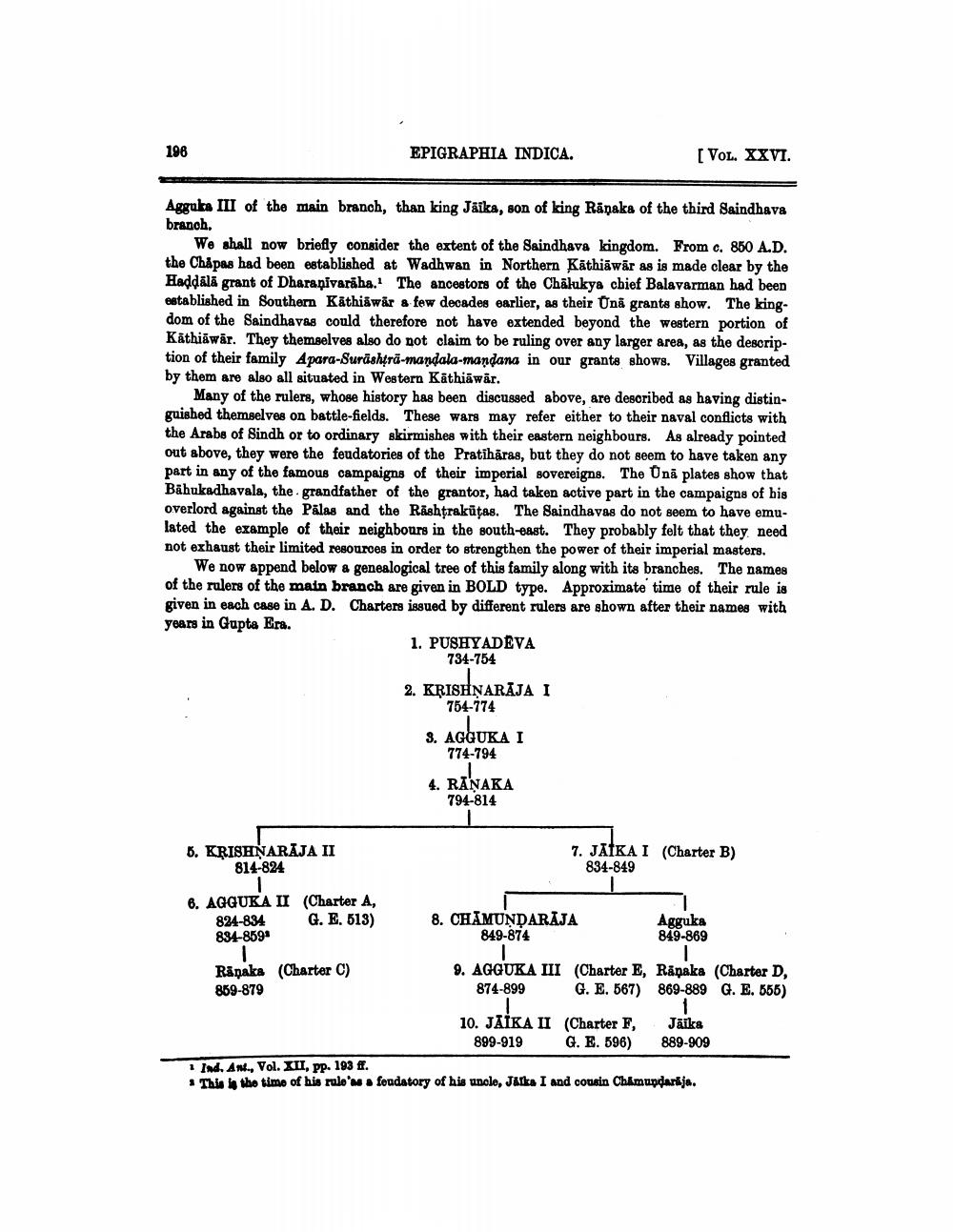________________
196
EPIGRAPHIA INDICA.
[VOL. XXVI.
Agguka III of the main branch, than king Jäika, son of king Rāņaka of the third Saindhava branoh.
We shall now briefly consider the extent of the Saindhava kingdom. From c. 850 A.D. the Chåpas had been established at Wadhwan in Northern Käthiāwār as is made clear by the Haddālā grant of Dharapivaráha. The ancestors of the Chälukys chief Balavarman had been established in Southern Käthiâwâr a few decades earlier, as their Unā grants show. The kingdom of the Saindhaves could therefore not have extended beyond the western portion of Käthiāwār. They themselves also do not claim to be ruling over any larger area, as the description of their family Apara-Surüshtra-mandala-mandana in our grante shows. Villages granted by them are also all situated in Western Käthiāwar.
Many of the rulers, whose history has been discussed above, are described as having distinguished themselves on battle-fields. These wars may refer either to their naval conflicts with the Arabs of Sindh or to ordinary skirmishes with their eastern neighbours. As already pointed out above, they were the feudatories of the Pratiháras, but they do not seem to have taken any part in any of the famous campaigns of their imperial sovereigns. The Unā plates show that Bāhukadhavala, the grandfather of the grantor, had taken active part in the campaigns of his overlord against the Palas and the Rashtrakūtas. The Saindhavas do not seem to have emulated the example of their neighbours in the south-east. They probably felt that they need not exhaust their limited resources in order to strengthen the power of their imperial masters.
We now append below a genealogical tree of this family along with its branches. The names of the rulers of the main branch are given in BOLD type. Approximate time of their rule is given in each case in A. D. Charters issued by different rulers are shown after their names with years in Gupta Era.
1. PUSHYADEVA
734-754
2. KRISHNARĀJA I
754-774
3. AGGUKAI
774-794
4. RANAKA
794-814
6. KRISHNARĀJA II
814-824
7. JATKAI (Charter B) 834-849
6. AGGUKA II (Charter A,
824-834 G. E. 513) 834-859*
8. CHIMUNDARAJA
849-874
Agguka 849-869
Rånaka (Charter C) 869-879
9. AGGUKA III (Charter E, Rânaka (Charter D,
874-899 G. E. 567) 869-889 G. E. 556)
10. JAIKA II (Charter F, Jāika
899-919 G. E. 596) 889-909 1 Ind. An., Vol. XII, pp. 193 ff. * This in the time of his rule'n a foudatory of his uncle, Jarka I and cousin Chamundarija.




